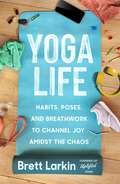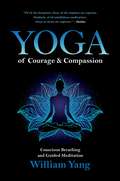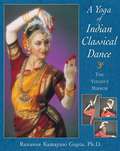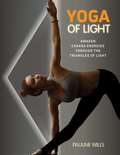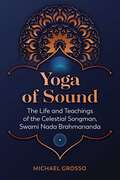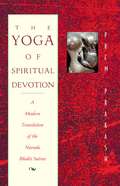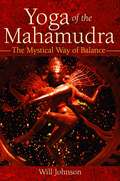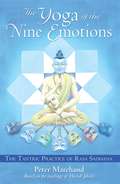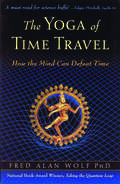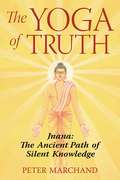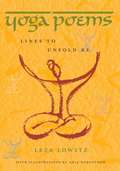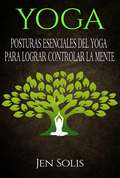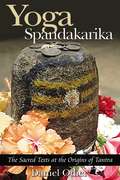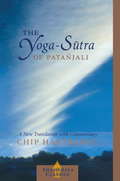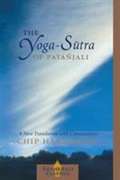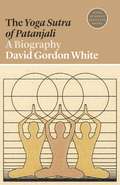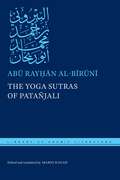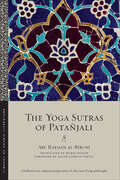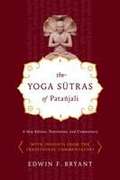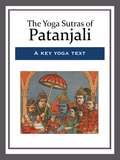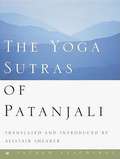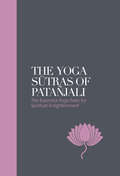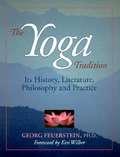- Table View
- List View
Yoga Life: Habits, Poses, and Breathwork to Channel Joy Amidst the Chaos
by Brett Larkin&“Brett translates the magic of ancient yoga for those who need it most.&” —James Nestor, New York Times bestselling author of BreathOverwhelmed? Overscheduled? Want to access the benefits of yoga, but can&’t seem to make it to the mat? Beat stress with a yoga ritual that works for you in 20-minutes or less. Featuring adaptations for anxiety, weight loss, injury, and prenatal yoga, this "playful and real" (Elena Brower) guide is a must-read for beginners and seasoned yoga teachers alike. We all know that yoga can calm your mind and heal your body, but let&’s be real: It can be hard to cram one more thing into your messy, stressful, time-crunched life. Good news! If you're not making it to the mat, the problem isn&’t you—it&’s the yoga you&’re practicing. Award-winning instructor and Uplifted Yoga founder Brett Larkin is here to help you design an adaptable, personalized practice, and cut to the chase with quick yoga habits that soothe your soul. With the support of quizzes and thirty book-exclusive companion videos you&’ll learn: A five-step method to design a personal practice that works for your schedule. How to adapt your practice to meet your physical, mental, and emotional needs. More than a dozen yoga habits that will help you calm your mind and body, even if you never manage to make it to the mat. Grounded in the wisdom of yoga&’s original texts, Brett reminds us that yoga was always meant to fit easily into our everyday lives. Whether you&’re a beginner or a life-long practitioner, Yoga Life is your new go-to for a personal, transformative, joyful at-home practice to strengthen your mind, body, and spirit.
Yoga of Courage and Compassion: Conscious Breathing and Guided Meditation
by William Yang• Shares a series of simple, practical, and profound conscious breathing, movement, and meditation exercises that help you bypass the ego-centered mind, open your heart, and live in the present moment • Developed through the author&’s decades of work with cancer patients Through decades of teaching yoga and meditation to cancer patients, William Yang witnessed hundreds of breakthroughs into radical presence and openheartedness. In many ways, his patients taught him more than he taught them. From this collaboration with the sick and dying, Yang developed a series of simple, practical, and profound conscious breathing, movement, and meditation exercises that help to bypass the ego-centered mind, open the heart, and live fearlessly in the present moment.Yang&’s exercises begin with an invitation to rediscover a natural and unforced way of breathing, so we can let go of our anxious ego and let life in again. From there, enlarging the sequence step by step, the author focuses on grounding and connecting with Mother Earth, working with the spine to develop a new sense of self-confidence, and opening the heart to love again.As we shed elements of the stressed, anxious person we once were, we are able to be more attuned to the world around us in a loving and caring way. Through the lessons learned from his cancer patients, Yang shows how, with courage and compassion, we can live and love without reservation at any time in our lives.
A Yoga of Indian Classical Dance: The Yogini's Mirror
by Roxanne Kamayani GuptaThe yoga and classical dance traditions of India have been inextricably entwined for millennia. The exacting hand gestures, postures and movements of Indian classical dance can only be achieved through yogic concentration. Conversely, the esthetics, symmetry, and dynamism of dance enhance the practice of yoga. These two traditions, so complementary and essential to one another, are united and explicated for the first time in A Yoga of Indian Classical Dance. Twenty-five years ago Roxanne Kamayani Gupta embarked on a journey of dance and yoga, yearning to unlock their mysteries and discover their common origins. As a twenty-year-old student from America she was miraculously and mysteriously absorbed into Indian culture, became a Hindu, and began an odyssey so unusual and unique that the reader will be enchanted by its telling. Choosing the path of the dancer, Roxanne Gupta accomplished what no Western woman had done before: being accepted and trained by Indian masters and then performing in the Indian classical traditions--from the palaces of maharajas to the arts festivals of Europe and America--while at the same time achieving a doctorate in the anthropology of religion and being initiated into a number of yogic traditions. Having mastered the classical form of Kuchipudi dance and studied with teachers of the hatha and kriya yoga traditions, she brings together these two great streams of consciousness and practice. In this tantric approach to yoga and dance, expressed through the body and through a yoga of emotions, we see the traditions embodied in a manner that embraces the totality of the human experience. The result is the dance of the yogini, the sacred feminine initiatress who dances with one foot in nature and the other in the realm of the gods. With extensive photographs of innovative yoga routines, Roxanne Kamayani Gupta distills her experience into techniques for yogic study certain to assist students of all levels to achieve a dynamic, beautiful, and graceful practice.
Yoga of Light: Awaken Chakra Energies through the Triangles of Light
by Pauline WillsMove into a fifth-dimensional way of living by engaging the energy lines between the chakras that form energetic triangles of light • Includes illustrated, step-by-step instructions for yoga asanas with explanations of the triangles of light created by each as well as their specific health benefits • Explains how the triangles of light energize the body, wake up our cells, and connect us to our own inner light • Introduces the 10 major and 21 minor chakras that form the triangles of light • Paper with French flaps We are all beings of light. Our bodies are pervaded and rejuvenated by energy lines between our major and minor chakras. When we practice yoga asanas (postures), these energy lines create triangles of light that connect us to universal light and energy. Focusing on them and feeling them during yoga practice can raise our vibrational frequency and help us move toward yoga’s eighth step--the state of enlightenment. Drawing on yoga’s original teachings, Yoga of Light reveals how to awaken and energize the chakra triangles of light with the practice of asanas, breathing, visualization, and meditation. Exploring the universal web of light and our place within it, as well as the body’s electromagnetic field, or aura, yoga expert Pauline Wills provides a concise introduction to the ten major and twenty-one minor chakras instrumental in forming the yoga triangles of light. You will discover how visualizing and, eventually, feeling these triangles as you practice the postures energizes the body, allowing you to connect to your own inner light. This wakes up all cells in the body and imbues them with increased energy. The triangles also firmly connect us to the sacred geometry of the universe, aligning us with the greater cosmos. The author includes an illustrated, step-by-step guide to the asanas, detailing how to perform them correctly, and clearly explains and depicts the triangles of light formed within each posture and their specific health benefits. She also includes a series of exercises and breathing techniques to affect and increase control of prana, the life force within the body, as well as simple exercises, warm-up movements, meditations, and visualizations to help familiarize yourself with the major chakras instrumental in forming the triangles of light. Yoga of Light reveals how, by working with the triangles of light, we can each become more aware of our connection to the web of light and the greater universe. This book, for beginners and advanced practitioners alike, shows how anyone can increase the benefits of their yoga practice by engaging and energizing the triangles of light.
The Yoga of Relationships: A Practical Guide for Loving Yourself and Others
by Yogi Amrit Desai<P> World-renowned yoga master Amrit Desai melds ancient wisdom with modern practicality as he offers piercing insight into the nature of relationships as a road map to fulfillment. The appendix includes outline of the basic life-observances of yoga, guidelines for day-to-day living, and meditations on healing relationships. <P> Yogi Amrit Desai is recognized as one of the pioneers of the authentic teachings of yoga in the West. Today he oversees the Amrit Yoga Institute in Salt Springs, Florida, with its many affiliate branches and teachers in North America and Europe. He travels extensively giving talks and workshops.
Yoga of Sound: The Life and Teachings of the Celestial Songman, Swami Nada Brahmananda
by Michael GrossoA guide to harnessing the vibration that created the universe for healing and spiritual awakening• Shares profound lessons from Swami Nada Brahmananda, a master of the yoga of sound and vibration• Centers on three life-enhancing themes: controlling the mind, diet and practices conducive to healing and perfect health, and how music can be used to transform consciousness and enrich our spiritual life• Also paints a vivid portrait of New York City in the 1970s and its underground arts and music sceneNot long after obtaining his Ph.D. in philosophy from Columbia University in 1971, Michael Grosso had an extraordinary experience in Greenwich Village, New York, that led him to realize he needed to balance his overly intellectual life with music. He met Swami Nada Brahmananda, a former court musician for the King of Mysore, famous throughout India for being a master of Taan music and sound yoga as well as for his supernatural control of his body. Grosso began studying with Swami Nada and found his life profoundly changed. Sharing the lessons of Swami Nada Brahmananda as well as painting a vivid portrait of New York City in the 1970s—and its vibrant and chaotic underground arts and music scene—Grosso explores Swami Nada&’s Indian yoga of sacred sound in depth. He reveals how the tradition centers on the sound or vibration that created the universe, its personal cultivation, and its power to heal, enlighten, and offer insight about how to live in the Kali Yuga, the Age of Conflict. Grosso also examines the siddhis, or extraordinary powers, that can arise from this work, detailing the otherworldly abilities of his master. The lessons that Grosso shares center on three life-enhancing themes: controlling the mind, which provides the very essence of a happy life; diet and practices conducive to healing and perfect health—Swami Nada himself never knew a day of sickness in all of his 97 years; and how music in all its forms can be used to transform consciousness and enrich our spiritual life. Revealing Swami Nada Brahmananda as the very embodiment of a Celestial Songman, Grosso shows how, by practicing the yoga of sound, we can embody Swami Nada&’s greatest lesson of all: that we can all learn to make music from the discordant notes of our lives and sing our way out of the Kali Yuga.
The Yoga of Spiritual Devotion: A Modern Translation of the Narada Bhakti Sutras
by Prem Prakash• The first translation of this great but little-known path of spiritual devotion written for the modern Western audience. • An insightful commentary aimed at making the path of love immediately accessible to Westerners. • A life-affirming and relationship-positive path of yoga. • Written in the spirit of the kirtans (ecstatic songs and dances) of Narada, sensitively translated by Prem Prakash. Bhakti Yoga, the path of devotion, is considered one of the primary paths for spiritual realization in yogic tradition. Its representative, Narada, is the embodiment of the enlightened sage who travels the universe spreading his sacred teachings. Unlike Jnana Yoga, the Yoga of Wisdom, the bhakti acolyte does not discriminate against material phenomena--for him, all phenomena are aspects of God. Within the context of Ananda, blissful love, the temporal is realized as the reflection of the eternal, and the soul is realized as the expression of God.
Yoga of the Mahamudra: The Mystical Way of Balance
by Will JohnsonPresents three simple yogic principles from Tilopa's Song of Mahamudra• Explains how balance is the key to achieving higher consciousness• Includes somatic koansMahamudra, literally "the great gesture," is often looked upon as the highest manifestation of consciousness known within the Tibetan Vajrayana tradition. In Yoga of the Mahamudra, Will Johnson explains how it is possible to bring forth the condition of mahamudra naturally by utilizing the mystical yoga of balance to create what he calls the embodied cross. He presents three simple yogic principles from Tilopa's Song of Mahamudra. The first principle, "do nothing with the body but relax," forms the vertical axis of the embodied cross. It is an internal process that focuses on the upright structure of the body, which opens up our relationship to the divine source. The second principle, "Let the mind cling to nothing," allows the horizontal flow of energy to our mind. This horizontal axis represents our relationship to the world: what we see and hear, and what our mind does with the objects we perceive. The establishment of these vertical and horizontal flows of energy allows us to embody the third principle, "to become like a hollow bamboo." In this way the body and mind become extraordinarily fluid, surrendering to the currents of the life forces that constantly flow through them like air through a flute. The author concludes with a number of somatic koans, exercises that allow the direct experience of balance and lead to the creation of the embodied cross.
The Yoga of the Nine Emotions: The Tantric Practice of Rasa Sadhana
by Peter MarchandA guide to changing negative emotions and promoting happiness using traditional Tantric and Ayurvedic practices• Details the 9 Rasas that represent our basic emotions• Offers emotional fasting exercises and daily routines for emotional well-being• Shows how Rasa Sadhana can be integrated with other yoga practices• Based on the teachings of Harish JohariRasas are the essence of our emotions that exist in both the body and the mind. The Tantric tradition recognizes 9 Rasas that represent our basic emotions: love, humor, wonder, courage, calmness, anger, sadness, fear, and disgust. Those who practice Rasa Sadhana learn to overcome negative emotions in order to pursue better health, enhanced spiritual growth, and enduring happiness.Our emotions are continuously affected by the interplay of our senses, the elements, food, and the life force in our body. In The Yoga of the Nine Emotions, Peter Marchand offers many practical physiological and philosophical tools from Tantric and Ayurvedic traditions that can help readers change their emotional patterns. He explains the nature and purpose of each Rasa and how we can strengthen or weaken one Rasa through another. He also offers Ayurvedic cooking guidelines and daily routines for balancing sensory input and strengthening emotional health, including fasting from negative emotions as well as how to energize positive ones. As we master our emotions through the practice of Rasa Sadhana, we gain true control of our lives and our relationships with others.
The Yoga of Time Travel
by Ph.D. Fred Alan WolfBuddha said he could move backward through time, observes theoretical physicist Fred Alan Wolf. Time travel is not just science fiction; it may actually be possible. Wolf draws on yoga and quantum physics to show that time is a flexible projection of mind. Cheating time, he says, is an ancient metaphysical idea from the Vedas having to do with moving through meditation to a place where time stands still.In reader-friendly language, Wolf explores how time and thought are bound together and how a change in ego structure could allow freedom from time's limitations. And he elaborates on benefits: Time travel, he asserts, could clarify our purpose; change our sense of self, the future, and death; and provide a hero's journey that might aid the entire community. Fascinatingly, Wolf thinks that, under certain circumstances, we might not only visit but even alter the past, with a ripple effect on the present.
The Yoga of Truth: The Ancient Path of Silent Knowledge
by Peter MarchandA guide to Jnana Yoga--the Way of Silent Knowledge--by direct contemplation of the Unchangeable • Shows that everything in one’s body, personality, thoughts, memories, and experiences has form and is changeable and, thus, is neither essential nor eternal • Identifies the witnessing consciousness within--all that remains when the ephemeral is eliminated--as the real Self, the one and only unchanging eternal Being In The Yoga of Truth, Peter Marchand, through a series of deceptively simple introspective questions, leads the seeker into discarding everything--body, personality, thoughts, memories, experiences--that disguises the ego’s relentless masquerade as the Self. This form of contemplation, with its constant commitment to witnessing without attachment, disempowers the ego’s fixation on its products, leading instead to the realization that the witnessing consciousness is, in fact, the one immutable Being within or without--the real Self, the true You. The universal illusion rests upon space and time, body and elements, the life force, mind, intellect, ego, and Self. Jnana Yoga reveals not only the insubstantial and illusory nature of our presumptions but also our habitual commitment to the illusion of being an individual that they create. This illusion collapses like a house of cards before direct inspection. When something has form, when it can change, it cannot be the eternal with which we seek union. Witnessing consciousness stands alone as that which is without form. In The Yoga of Truth, Marchand leads us simply, and compellingly, to the truth of our nature and the peaceful bliss of true Being.
Yoga Poems
by Leza Lowitz Anja BorgstromThe sixty poems in this book are windows into the mind/body/spirit experiences that come about through yoga practice. Each poem is named for a posture or breath exercise and is inspired by the physical properties of the pose or some aspect of breathing that led the poet to deeper understanding. Listening to these poems read aloud, or contemplating them on one's own, will help yoga students understand their own struggles and inspire them on the way to personal transformation.
Yoga: Posturas Esenciales del Yoga para Lograr Controlar la Mente
by Jen SolisLa idea de este libro es proporcionarle posturas o ejercicios que le ayuden a obtener el control sobre la mente y a ser capaz de enfocar sus pensamientos, lo que constituye una herramienta muy poderosa. Y esto nos lleva a nuestra próxima meta, que es enseñarle acerca de la respiración y del poder que puede brindarle. La idea del yoga es lograr la iluminación y, para este fin, si puede controlar la respiración, estará encaminado hacia el control de su cuerpo, lo que a su vez le ofrece control sobre la mente. El propósito del yoga es hacer diferentes posturas corporales con aumento de dificultad, y cuanto más control ejerce sobre la mente, más fácil resulta lograr las posturas más complicadas. Y a su vez, esto nos lleva hacia la siguiente meta, que para la mayoría de las personas es el meollo de todo libro sobre yoga. Las posturas o posiciones tienen la intención de ayudar a enfocar la mente. La práctica del yoga comúnmente comienza con las más básicas, sólo con la intención de meditar o relajar la mente y el cuerpo y gradualmente cambia hacia posturas más difíciles mientras se puede mantener un estado relajado del cuerpo y de la mente. El control sobre la mente es muy importante para el yoga y para la vida diaria. Cuando tiene el poder de concentrarse, la mente puede ejercer cierta forma de control sobre un músculo que verdaderamente parece tener su propia mente. A través de la práctica del yoga, será capaz de lograr una mejor concentración y a su vez alcanzar la felicidad. Esta felicidad proviene de la iluminación, el descubrimiento del cuerpo y la habilidad para concentrarse y agudizar la mente. Analizaremos cómo este control es importante para el yoga y puede trasladarse a otros aspectos de la vida en la última sección de este libro. El yoga se aprende, es algo que se puede enseñar y algo que puede ser muy beneficioso para aquellos que se sienten atormentados o desenfocados en la vida. Una vez que s
Yoga Spandakarika: The Sacred Texts at the Origins of Tantra
by Daniel OdierTranslation and commentary of one of the most important texts of the Kashmirian Shivaism tradition of Tantra• Author was a student of the late Kalu Rinpoche• Explores the transmission of Mahamudra, the Great Cosmic Gesture• Includes the Vijnanabhaïrava Tantra, which contains the totality of the oldest source text on Yoga The Spandakarika, the "Tantric Song of the Divine Pulsation," is said to have been transmitted directly to the sage Vasugupta from the hands of Shiva on Mount Kailas. In his commentary on these fifty-two stanzas, the sage Ksemaraja described them as the heart of the Mahamudra. The oldest masters of Spandakarika viewed everything in the universe, including matter, as consciousness and created a yoga practice in accordance with this realization. The sacred dance of Yoga Spandakarika, Tandava, is extremely subtle and difficult, requiring thousands of hours of practice to master, yet it surpasses any other physical practice, allowing the practitioner to touch the divine inner pulse. Once its third stage has been mastered, the yogi or yogini is able to manifest the dance of Shiva in space, a tradition visible in the statuary of Tantric temples in India and Tibet. Energy is no longer contracted by the perception of duality, and the mind and body become unbounded, forming a sphere that contains all that was formerly outside. In Yoga Spandakarika Daniel Odier passes on these vanishing teachings as he received them from his Tibetan master, Kalu Rinpoche, and Kashmiri yogi Lalita Devi.
The Yoga-Sutra of Patanjali: A New Translation with Commentary
by Chip HartranftIn just 196 short aphorisms, this classic work of Indian philosophy spells out succinctly how the mind works, and how it is possible to use the mind to attain liberation. Compiled in the second or third century CE, the Yoga-Sutra is a road map of human consciousness--and a particularly helpful guide to the mind states one encounters in meditation, yoga, and other spiritual practices. It expresses the truths of the human condition with great eloquence: how we know what we know, why we suffer, and how we can discover the way out of suffering. Chip Hartranft's fresh translation and extensive, lucid commentary bring the text beautifully to life. He also provides useful auxiliary materials, including an afterword on the legacy of the Yoga-Sutra and its relevance for us today.
The Yoga-sutra of Patañjali: A New Translation with Commentary
by Chip Hartranft PatañjaliIn just 196 short aphorisms, this classic work of Indian philosophy spells out succinctly how the mind works, and how it is possible to use the mind to attain liberation. Compiled in the second or third century CE, the Yoga-Sutra is a road map of human consciousness--and a particularly helpful guide to the mind states one encounters in meditation, yoga, and other spiritual practices. It expresses the truths of the human condition with great eloquence: how we know what we know, why we suffer, and how we can discover the way out of suffering. Chip Hartranft's fresh translation and extensive, lucid commentary bring the text beautifully to life. He also provides useful auxiliary materials, including an afterword on the legacy of the Yoga-Sutra and its relevance for us today.
The Yoga Sutra of Patanjali: A Biography (Lives of Great Religious Books #43)
by David Gordon WhiteThe rise, fall, and modern resurgence of an enigmatic book revered by yoga enthusiasts around the worldConsisting of fewer than two hundred verses written in an obscure if not impenetrable language and style, Patanjali's Yoga Sutra is today extolled by the yoga establishment as a perennial classic and guide to yoga practice. As David Gordon White demonstrates in this groundbreaking study, both of these assumptions are incorrect. Virtually forgotten in India for hundreds of years and maligned when it was first discovered in the West, the Yoga Sutra has been elevated to its present iconic status—and translated into more than forty languages—only in the course of the past forty years.White retraces the strange and circuitous journey of this confounding work from its ancient origins down through its heyday in the seventh through eleventh centuries, its gradual fall into obscurity, and its modern resurgence since the nineteenth century. First introduced to the West by the British Orientalist Henry Thomas Colebrooke, the Yoga Sutra was revived largely in Europe and America, and predominantly in English. White brings to life the improbable cast of characters whose interpretations—and misappropriations—of the Yoga Sutra led to its revered place in popular culture today. Tracing the remarkable trajectory of this enigmatic work, White’s exhaustively researched book also demonstrates why the yoga of India’s past bears little resemblance to the yoga practiced today.
The Yoga Sutras of Patañjali (Library of Arabic Literature #68)
by Abū Rayḥān al-BīrūnīA brilliant cross-cultural Arabic interpretation of a key text of yoga philosophyThe Yoga Sutras of Patañjali is the foundational text of yoga philosophy to this day and is still used by millions of yoga practitioners and students worldwide. Written in a question-and-answer format, The Yoga Sutras of Patañjali deals with the theory and practice of yoga and the psychological question of the liberation of the soul from attachments.This book is a new edition and translation into English of the Arabic translation and commentary on this text by the brilliant eleventh-century polymath al-Bīrūnī. Given the many historical variants of the Yoga Sutras, his Kitāb Bātanjali is important for yoga studies as the earliest translation of the Sanskrit text. It is also of unique value as an Arabic text within Islamic studies, given the intellectual and philosophical challenges that faced the medieval Muslim reader when presented with the intricacy of composition, interpretation, and allusion that permeates this translation.A bilingual Arabic-English edition.
The Yoga Sutras of Patañjali (Library of Arabic Literature)
by Abu Ray?an al-Biruni Mario Kozah David Gordon WhiteA brilliant cross-cultural interpretation of a key text of yoga philosophyThe Yoga Sutrasof Patañjali is the foundational text of yoga philosophy, used by millions of yoga practitioners and students worldwide. Written in a question-and-answer format, The Yoga Sutras of Patañjali deals with the theory and practice of yoga and the psychological question of the liberation of the soul from attachments. This book is a new rendering into English of the Arabic translation and commentary of this text by the brilliant eleventh-century polymath al-Biruni. Given the many historical variants of the Yoga Sutras, his Kitab Batanjali is important for yoga studies as the earliest translation of the Sanskrit. It is also of unique value as an Arabic text within Islamic studies, given the intellectual and philosophical challenges that faced the medieval Muslim reader when presented with the intricacy of composition, interpretation, and allusion that permeates this translation.An English-only edition.
The Yoga Sutras Of Patañjali: A New Edition, Translation, And Commentary
by Edwin BryantWritten almost two millennia ago, Patañjali's work focuses on how to attain the direct experience and realization of the purusa: the innermost individual self, or soul. As the classical treatise on the Hindu understanding of mind and consciousness and on the technique of meditation, it has exerted immense influence over the religious practices of Hinduism in India and, more recently, in the West. Edwin F. Bryant's translation is clear, direct, and exact. Each sutra is presented as Sanskrit text, transliteration, and precise English translation, and is followed by Bryant's authoritative commentary, which is grounded in the classical understanding of yoga and conveys the meaning and depth of the su-tras in a user-friendly manner for a Western readership without compromising scholarly rigor or traditional authenticity. In addition, Bryant presents insights drawn from the primary traditional commentaries on the sutras written over the last millennium and a half.
The Yoga Sutras of Patanjali
by PatanjaliThe 'Yoga Sūtras of Patañjali' are 196 Indian sūtras (aphorisms) that constitute the foundational text of Ashtanga Yoga, also called Raja Yoga. In medieval times, Ashtanga Yoga was cast as one of the six orthodox āstika schools of Hindu philosophy.
The Yoga Sutras of Patanjali
by Alistair Shearer“A wonderful translation, full of contemporary insight yet luminous with eternal truth. ”—Jacob Needleman The Yoga Sutraswere cast in their present form in India around the third century b. c. Yoga is from the Sanskrit root meaning “union,” and a sutra is a thread or aphoristic verse. The basic questions “Who am I?” “Where am I going?” “What is the purpose of life?” are asked by each new generation, and Patanjali’s answers form one of the oldest and most vibrant spiritual texts in the world. He explains what yoga is, how it works, and exactly how to purify the mind and let it settle into absolute stillness. This stillness is our own Self. It is the indispensable ground for Enlightenment, which is the ultimate goal of all our aspirations. Alistair Shearer’s lucid introduction and superb translation, fully preserving Patanjali’s jewel-like style, bring these ancient but vital teachings to those who seek the path of self-knowledge today. Bell Tower’s series, Sacred Teachings, offers essential spiritual classics from all traditions. May each book become a trusted companion on the way of truth, encouraging readers to study the wisdom of the ages and put it into practice each day.
The Yoga Sutras of Patanjali
by Swami VivekanandaThe practical and philosophical foundations of Raja Yoga, the most important text in Eastern religion, translated by the great Swami Vivekananda, with his illuminating commentary.
The Yoga Tradition: Its History, Literature, Philosophy and Practice
by Georg FeuersteinThe author is founder-director of the Yoga Research Center in Northern California and the author of 30 books on yoga. The present volume is a revised and greatly enlarged edition of the author's 1989 work, Yoga: The Technology of Ecstasy .
